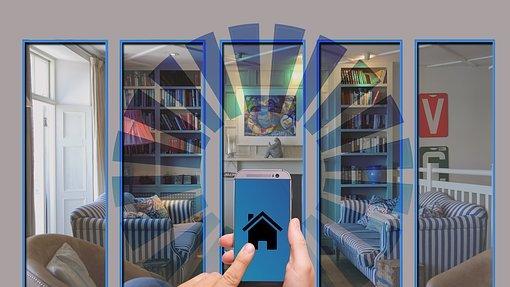Smart home technology is growing by leaps and bounds. From home video surveillance cameras to thermostats that can be controlled from your cell phone and smart refrigerators that display the family calendar, these technology forward IoT devices are here to stay.
The Internet of Things, or IoT, refers to anything with an on/off switch that connects to the Internet. The ability to connect devices to other devices is impacting both home renovations and new-build projects.
Even though the concept of smart buildings emerged when energy conservation became an important and necessary part of construction, the technology is evolving quickly – and consumers are accepting the idea of connecting the devices across their world.
Controlled lighting
Voice activated lighting allows you to walk into your dark house from the garage and command the lights to turn on. Or, you are able to sync your household lighting system with your cell phone and turn lights on and off while you are away for the weekend. Outdoor lighting systems offer motion detectors, bringing another layer of security to your property. With these systems, the integrated controls introduce the idea of a home being able to sense when something needs to be done, or if something is wrong.
Home surveillance cameras
Installing a home surveillance camera brings an extra level of security to the home dweller, but it also increases neighborhood security.
After these products are installed, you can monitor your property whether you’re at home or hundreds of miles away.
Neighbors participating on social media sites are sharing footage of late-night creepers trying to break into cars and thieves stealing packages from front porches, and they are sending out alerts to their neighbors when they see suspicious activity happening.
New devices continually are developing – from facial-recognition cameras to remote locks and video doorbells.
Smart thermostats, appliances and more
Smart refrigerator sales are rising fast. Consumers appear to like the convenience of a refrigerator that can assist with their grocery list, display the family calendar for everyone to see, display a slideshow on its front panel and able to connect to the Internet to find a recipe and read it out loud.
Smart ovens are making their way into kitchens as well. The ovens can be programmed to turn on and off from a remote location.
Voice activated systems are available for other areas of the home, too. Delta and Kohler offer voice-activated shower heads and faucets. The benefits of this type of technology include saving water and reducing the transfer of germs.
Smart thermometers control heating and cooling through programming, and when you are away the new generation of these devices can be controlled from a cell phone application.
Environmental quality monitoring devices
Monitoring home air and water quality is another area that smart technology has emerged. These applications provide a notification if the air quality sensor detects harmful chemicals such as carbon monoxide, volatile organic compounds or radon. There are units that can detect a water leak and shut off the water. This would be valuable if a pipe bursts or there is a leak while you are at work or on vacation.
Final thoughts
Although the homeowner can install smart technology after the construction of their new home or renovation is completed, these technologies also can be integrated into design plans.
During construction, it is sensible to install a hardwired network and wireless access points to provide a strong wi-fi signal in all locations including the “dead zones” such as the backyard or the garage.
Traditional outlets are needed throughout your home, because even high tech devices generally are plugged into a three-prong outlet. But there are different products out there such as outlets that include a port for charging your cell phone or laptop. Discuss with a professional where the outlets should be located and how many are needed in each room.
Murfey Company is committed to efficient construction in its commercial and residential projects from start to finish. The San Diego based company is Leadership in Energy and Environmental Design (LEED) certified by the U.S. Green Building Council. If you are interested in learning more about our construction and real estate development projects, please visit collinsbuild.wpengine.com.
This article originally appeared in The La Jolla Light

